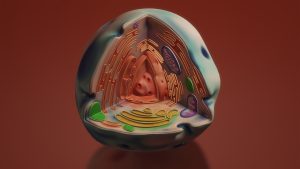Discover Red Light Therapy’s Miraculous Healing Power
Plagued by nagging shoulder pain that anti-inflammatories couldn’t help, Andrew, an avid weightlifter, tried red light therapy out of desperation. After just two weeks of red light treatment, Andrew’s shoulder felt dramatically better with full mobility restored. He soon went on to smash his personal bench press record.
Monica, a stay-at-home mom, struggled for years with thinning hair and bald spots no stylist could mask. Her distressing hair loss left her self-conscious about being seen in public. However, once she started a regimen of red light helmet treatments, Monica was stunned to see baby hairs sprouting within a month. After three months, she had a full head of the thickest, shiniest hair she hadn’t seen since high school.
Jack, a retired veteran, had endured chronic knee pain for decades and could barely walk his dog each morning. Pharmaceuticals offered little lasting relief, so he assumed joint replacement surgery was inevitable. But after just one month of red light therapy, Jack’s knee pain vanished, and he could walk normally again.
What Is Red Light Therapy?
Simply stated, red light therapy (RLT) is a non-invasive treatment that involves shining red light directly on your skin where it can penetrate deep into skin and muscle to improve your health and accelerate healing at the cellular level. In the case of Andrew, Monica, and Jack, doctors exposed their bodies to certain wavelengths of red and near-infrared light to promote cellular repair and rejuvenation.
The Science Behind Red Light Therapy
Red light therapy is grounded in scientific principles, with a growing body of research supporting its therapeutic benefits. Understanding the science behind red light therapy can shed light on its widespread applications and unlock its potential as a holistic healing tool.
Red light therapy operates on the principle of photobiomodulation. This process involves the exposure of body tissues to low levels of red or near-infrared light, which stimulates cellular function and promotes tissue repair and regeneration.
Photobiomodulation harnesses certain wavelengths of visible red light (600 – 700 nm) and invisible near-infrared light (700-1000 nm) from lasers or LED devices to penetrate through your skin and underlying tissue to a depth of about 8-10 millimeters. When the light penetrates your cells, it activates cellular energy production by targeting the mitochondria – the “power plants” of your cells that produce the energy your cells need to function well.
When the mitochondria absorb the red and near-infrared light, it stimulates a natural photochemical reaction. This heightens cellular activity and triggers a cascade of beneficial biological changes such as activating the body’s natural self-healing capabilities and creating beneficial transformations in your body.
What’s exciting about red light therapy is that it supercharges your cells and immune system in a big way. This is crucial because as we age, become sick, or suffer from stress, our cells can become slow to heal or they just die off. That’s what causes diseases and degenerative conditions.
Red light therapy also increases nitric oxide heals our cells and increases blood flow. This, in turn, strengthens our immune system to defend against disease, regulate our blood pressure, and reduce inflammation.
To summarize, red light therapy supercharges the mitochondria to produce the energy you need for healthy cells. It stands to reason that healthy cells will lead to much better overall health and feelings of well-being.
The History of Red Light Therapy
The use of red light as a therapeutic tool dates back to ancient civilizations. Egyptian, Indian, and Chinese civilizations all practiced various forms of light therapy for promoting health as early as 3000 BC. Sunlight, colored light, and fire were used for their believed rejuvenating properties.
In more recent history, NASA helped revive interest in light therapy in the 1960s while researching plant growth. NASA found that near-infrared light could accelerate plant cell growth. This spurred studies on how red light could heal human cells and tissue.
In 1967, a Hungarian doctor named Endre Mester examined how laser light affected skin tumors in mice. He discovered that light could shrink tumors, but it also stimulated hair regrowth and wound healing. This marked the first key discovery of red light’s potential for biostimulation and photobiomodulation.
Through the 1970s and 1980s, most research focused on red light’s effects on skin and wounds. In 2000, scientists confirmed red light could stimulate mitochondrial function and energy production within cells.
In 2010 and onward, red light therapy has experienced surging popularity and adoption. LED light panels have made it affordable and accessible for in-home use.
Today, red light is widely researched and used clinically for an ever-expanding list of health conditions and anti-aging applications.
How Red Light Therapy Differs from Ultraviolet Light Therapy
It’s important to clarify how red light therapy differs from ultraviolet (UV) light therapy. UV light has some therapeutic uses, but an excess of exposure causes sunburns and may damage DNA.
Red light used in photobiomodulation has much longer wavelengths than UV light. Longer wavelengths mean red light does not emit the same energy or penetrate as deeply as short-wave UV light. Therefore, red light is much gentler on your skin.
Red light absorption mainly affects cell mitochondria to provoke positive changes, whereas excessive UV absorption generates free radicals that can harm DNA and cause mutations. So red light supports your body’s natural renewal, while UV light exceeds safe biological thresholds.
In short, red light nourishes while UV light can injure at high levels. Red light therapy harnesses only beneficial wavelengths that are biocompatible with your body.
Differences Between Red Light Therapy and Infrared Saunas
While both red light therapy and infrared saunas harness infrared light for therapeutic purposes, they differ in their application and impact. Red light therapy targets specific areas with precise wavelengths, delivering targeted benefits to the skin and deeper tissue layers, whereas infrared saunas provide more generalized heat therapy.
Obtaining Red Light Therapy Devices
Choosing a reliable red light device is crucial. Cheap imitation options may use lower quality LEDs at ineffective wavelengths. Medical grade devices available through health providers typically offer the highest performance standards.
Leading equipment companies like Red Light Man, UltraLux Health, and Joovy Red Light Therapy make at-home red light therapy devices in various forms. Best Buy also offers a selection of medical-grade red light therapy devices for at-home use as does Amazon. These devices include compact face masks, caps, belts, and full-body panels for easy use for targeted or full-body treatments.
Remember, not all light is equal when it comes to therapeutic value. Consult experts to ensure your device meets medical specifications for optimal restorative red light benefits.
The Health Benefits of Red Light Therapy
Studies and clinical trials have documented promising results from red light therapy such as improved blood flow, cell growth, and reduced inflammation. Additionally, its application has shown potential for improving psoriasis and acne, promoting healing of wounds, joints, and muscle tissue, and even restoring hair and scalp health.
Overall, the increasing body of evidence supporting the benefits of red light therapy underscores its potential as a valuable treatment option for a diverse range of health conditions, making it an area of great interest for both medical professionals and those seeking alternative health solutions.
Here are some of the some of the top benefits of red light therapy:
Wound Healing and Skin Health: Multiple studies confirm red light energizes your skin cells and regenerates tissue to accelerate healing wounds, burns, scars, and skin damage. It also reduces wrinkles, inflammation, sunspots, and even stretch marks by stimulating collagen production.
Joint and Muscle Pain: Red light penetrates tissue to relieve muscle soreness and joint pain, including pain caused by arthritis. It reduces inflammatory markers and repairs damage in muscles and bones to improve flexibility, function, and mobility.
Hair Loss: Red light stimulates epidermal stem cells that renew hair follicles. This helps regrow hair by activating growth phases, curbing hair loss, and improving thickness and luster.
Mood Improvement: Red light has been shown to improve mood in patients with depression. A 2018 study published in the Journal of Affective Disorders found that red light therapy significantly improved depressive symptoms in patients with major depressive disorders. However, more research is needed to determine the full effectiveness of RLT for depression.
Sleep Improvement: Red light can improve sleep quality in patients with sleep disorders.
Neurological Disorders: The light’s anti-inflammatory effects can improve conditions like Alzheimer’s and Parkinson’s disease by protecting neurons. Especially promising is that red light combats recurring brain fog and cognitive dysfunction after traumatic brain injuries.
Immune Dysfunction: Red light exposures boost immune cell counts and activity. It helps rebalance your immune system whether overactive like in autoimmune disease or suppressed like in cancer. The result is less inflammation and better immunity.
Thyroid Health: Red light therapy normalizes thyroid hormones by reducing inflammation and autoimmune antibodies. This helps resolve symptoms like fatigue, weight gain, and hair loss.
Oral Health: Dentists now use red light to heal gum disease, ulcers, and oral infections thanks to its disinfectant and regenerative effects. It also reduces oral pain and periodontal inflammation.
Eye Health: Red light therapy has been shown to treat and prevent eye conditions such as dry eyes, age-related macular degeneration, glaucoma, myopia, and support general eye health. Research suggests that a single session of red light therapy led to a remarkable 13% improvement in vision enhancement and eye health, providing a ray of hope for individuals seeking to improve their visual capabilities.
Libido and Sexual Function: By improving tissue oxygenation and blood flow, red light therapy enhances sexual arousal, sensitivity, and performance in both sexes. It also offsets erectile dysfunction and menstrual issues.
Fertility: Red light can improve sperm motility and egg quality. It also reduces PCOS symptoms and ovarian cysts to enhance conception chances.
Circulatory Problems: Red light boosts nitric oxide to widen blood vessels, increase circulation, resolve clotting, and lower high blood pressure. Patients see benefits for conditions like heart disease, diabetes complications, cramping, and Raynaud’s Syndrome.
Nerve Damage and Neuropathy: Red light repairs damaged nerves and generates new neuron growth. This offers hope for restoring sensation and movement for neurological injuries, diabetic neuropathy, and degenerative conditions.
Obtaining Red Light Therapy for Home Use
Choosing a reliable red light device is crucial. Cheap imitation options may use lower-quality LEDs at ineffective wavelengths. Medical-grade devices available through health providers typically offer the highest performance standards.
Leading equipment companies like Red Light Man, UltraLux Health, and Joovy Red Light Therapy make at-home red light therapy devices in various forms. Some of the forms include compact face masks, caps, belts, and full-body panels to allow ease of use for targeted or full-body treatment.
Remember, not all light is equal when it comes to therapeutic value. Consult experts to ensure your device meets medical specifications for optimal restorative red light benefits.
Leading Doctors, Medical Institutions See the Benefits of RLT
There are also many reputable organizations, and medical institutions researching and utilizing red light therapy. Here is a partial list:
• Mayo Clinic conducts clinical trials on red light for oral mucositis, thyroid disease, and cognitive impairment.
• Cleveland Clinic conducts studies of red light on stroke, traumatic brain injury, and Parkinson’s disease.
• Harvard Medical School researches red light therapy for skin disorders, neurodegeneration, and psychiatric conditions.
• Stanford University tests red light on animal models for accelerated wound healing.
• Cedars-Sinai Medical Center researches red light for spinal cord and nerve injuries.
Prominent doctors and medical practitioners are also using red light therapy with remarkable results and success stories in various medical applications. They include neuroscientist Dr. Michael Hamblin, brain health expert Dr. Daniel Amen, and anti-aging trailblazer Dr. Joseph Mercola. Their clinical results and advocacy lend credence to red light’s health-enhancing effects and bodes well for its future use.
Dr. Andrew Huberman, associate professor of neurobiology and ophthalmology at the Stanford University School of Medicine, also extols red light therapy’s virtues. He says, “No other form of energy – sound, drugs, food, touch – nothing can target the locations in our cells like light can. This is the best surgical tool to modulate your biology.”
Science writer Mark Sloan, author of the International #1 best-selling book Red Light Therapy – Miracle Medicine, writes, “When you explore the 50,000+ scientific and clinical studies conducted on red light therapy to date, you’ll find that no matter which disease a person has, they can probably benefit from red and near-infrared light.”
Sloan adds, “Red light therapy represents a revolution in medicine and the day will come when it can be found in every household.”
The Future of Red Light Therapy Looks Bright
As noted, red light therapy has gained significant recognition in therapeutic and wellness practices, with leading doctors and medical organizations incorporating it into their treatment plans. The medical community’s growing interest in red light therapy is driven by substantial scientific evidence supporting its effectiveness in addressing various health issues.
As research continues to pinpoint additional possible benefits, including improving eyesight, treating pancreatitis, minimizing side effects of cancer treatments, and easing depression and Seasonal Affective Disorder (SAD), it’s safe to say the future looks bright for red light therapy.
Even NASA and the U.S. Navy are using red light therapy with notable results. NASA uses red light to heal wounds and bone density loss in astronauts during space travel, while the U.S. Navy employs red light therapy to accelerate wound healing for sailors and Marines.
Red light therapy has demonstrated significant effectiveness in addressing various health concerns as presented in this post, such as skin conditions, pain management, and mental well-being. Research suggests promising results in skin rejuvenation, improved skin complexion, reduced inflammation, and enhanced blood flow.
Its accessibility has increased with FDA approval for different uses, making it a safe and non-invasive treatment option. The growing interest in red light therapy reflects the expanding recognition of its potential benefits, driving its application for a diverse range of health issues.
As medical practitioners and individuals seek alternative and holistic approaches to address pain, low energy, facial blemishes, wrinkles, slow-healing wounds, and joint pain, red light therapy stands out as a compelling and viable solution.
Now that you know about red light therapy, let the healing light shine!





